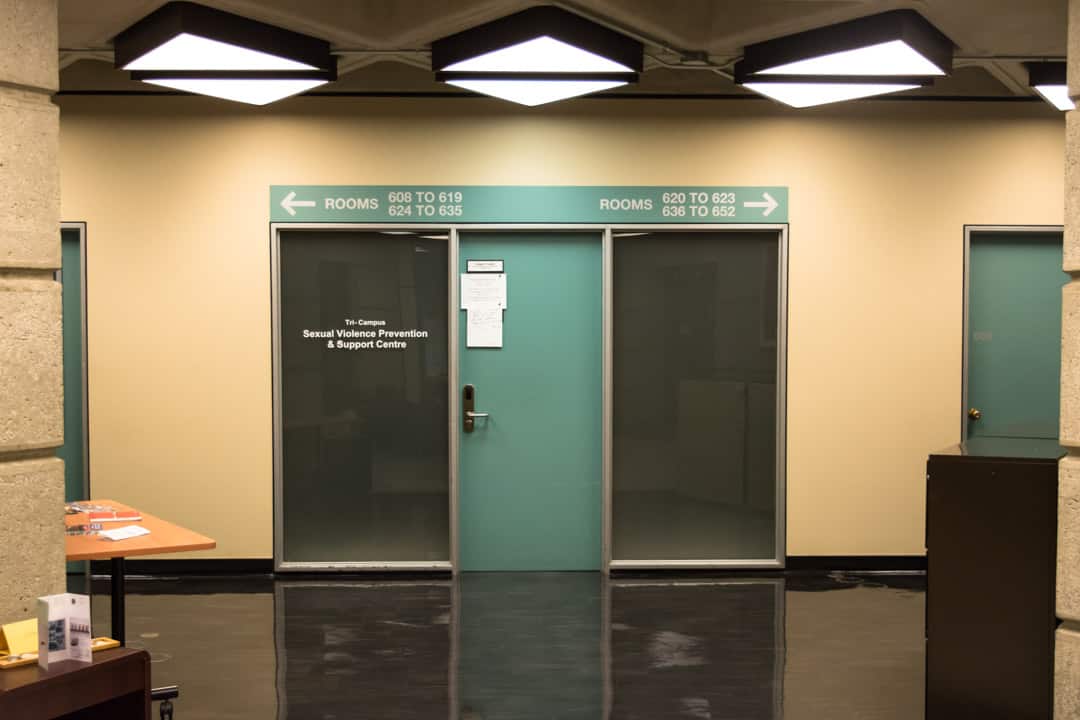As part of its efforts to educate the community about sexual violence and work to prevent it, U of T has released a new online training module.
The 40-minute video program, which is only accessible to U of T students, staff, and faculty, includes definitions of sexual violence, information on how to respond to someone who has disclosed an incident of sexual violence, and the types of support that the university provides.
The module itself is accessible through Blackboard, with different options for faculty, staff, and students. While completion of the module is not mandatory, it is “strongly encouraged” by the university.
Chimwemwe Alao, University of Toronto Students’ Union (UTSU) Vice-President Equity, criticized the university for making the module voluntary and complicated to access.
“Without the training being mandated or incentivized, students will have to seek it out of their own personal interest,” said Alao. “And chances are that those who are seeking it out will be the ones already well versed in sexual violence initiatives and the policy.”
Terry McQuaid, Executive Director of the university’s Sexual Violence Prevention and Support Centre, said that “the online module is just one in a series of steps we are taking to create a safer campus.”
She expressed that much of the work to educate and prevent sexual violence is happening in more ways than one, mentioning in-person workshops and discussions with various departments and faculties.
Inside the module
The course begins by providing a comprehensive definition of sexual violence under the university’s Policy on Sexual Violence and Harassment, which has been in place since last January. Sexual violence includes physical and non-physical instances of sexual assault and harassment; it also covers instances of targeting people for their sexuality, gender identity, or gender expression.
The module gives the user various hypothetical scenarios, and they must identify whether or not sexual violence is present in those situations. It also teaches users about the nuances of sexual harassment, such as compliments with a sexual undertone.
The user is also given information on how to respond to someone who is disclosing an incident of sexual violence. This includes prioritizing their needs by understanding that for someone who has experienced sexual violence, it might be difficult for them to go into detail or repeat their story over and over again.
Information on the assistance and support options the university provides for sexual assault survivors is also taught in the module. The course offers various specifics on how the tri-campus support centres can assist people dealing with sexual assault, including academic, legal, and financial accommodations.
While Alao believes that “the university has taken some positive steps forward,” he expressed that there is still work to be done on the existing sexual violence policy and reiterated the concern that students were not given adequate space to give input on the policy during its creation.
“There is still much it can do in order to combat sexual violence on campus,” said Alao. “In regards to what the university should be doing, one of the main things is taking into account of students and survivors.”
McQuaid said that the university hopes to be able to “prevent sexual violence from happening at all.”
“We heard from our community that they are looking for resources and support to understand the issue of sexual violence and how to respond if someone needs support,” said McQuaid. “But our training is the first step to providing information and its part of our broader university efforts to create a campus where people can work and study free from sexual violence.”


